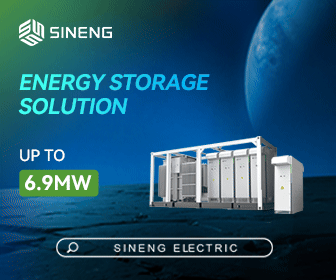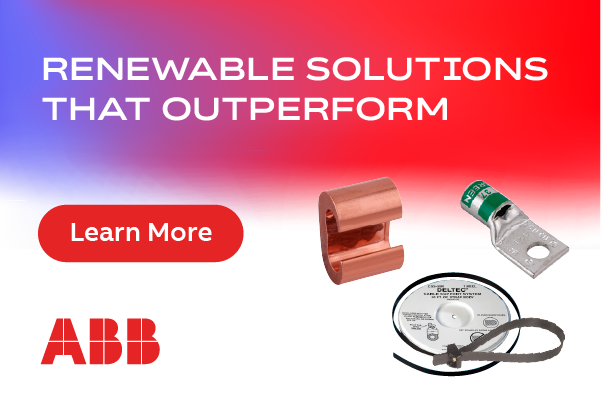How to Select the Right AGM Battery
 Finding the ideal battery for a system doesn’t have to be difficult -- providing one knows what to look for. On the surface, many batteries share almost identical specs and boast bold promises. But glossy brochures and spec sheets only tell part of the story.
Finding the ideal battery for a system doesn’t have to be difficult -- providing one knows what to look for. On the surface, many batteries share almost identical specs and boast bold promises. But glossy brochures and spec sheets only tell part of the story.
Materials, manufacturing methods, and quality control procedures in a battery profoundly impact performance, maintenance, and lifespan. Some manufacturers use subpar materials and outdated manual assembly that compromise performance and lifespan, resulting in “bargain” batteries that fail early, require additional maintenance, and cost more over time. Other manufacturers use technologies which will keep their batteries running longer and better, from more lead and heavier grids, to computerized pasting, robotic assembly, and vision systems. Learning to identify the differences between batteries and asking the right questions of manufacturers is important to finding the right solution for each application.
Finding the right solution
Renewable energy (RE) systems require electricity for long time periods and constantly charge and discharge, which means they require deep-cycle batteries. That means many common battery types are poorly suited to this environment. Commercial and automotive lead-acid starter batteries only provide short bursts of power, making them a poor fit. Uninterruptible power supply (UPS) batteries can’t handle constant cycling. And lithium-ion batteries are maintenance-free but have a high cost per ampere-hour (aH), suffer from fire and thermal runaway risks, and degrade at high temperatures. Lithium-ion batteries also can’t be fully recycled.
For most people, lead-acid batteries are the best fit. Their reliability and safety have been proven for over 100 years, and they’re 97% recyclable. These batteries come in two primary types: flooded, and absorbent glass mat (AGM). Flooded batteries are affordable, easy to maintain, long-lasting, and reliable.
Originally developed for military aircraft and vehicles to boost reliability, AGM batteries are sealed, spill-proof, safe, and no-maintenance. They offer low internal resistance, long service life, and high current delivery. They can charge up to five times faster than their deep-cycle counterparts. AGM batteries have higher manufacturing costs and a slightly lower energy storage capacity, but because of their features, they often save time and money in maintenance.
What makes a better battery?
AGM batteries generate electrical current by converting stored chemical energy into electrical energy, in a process that starts in their lead. Because almost all North American battery manufacturers use recycled lead, differences in longevity and performance come from quality controls, additive formulation, and lead oxide production methods. Computerized lead oxide production can be considered the most reliable method of production.
An AGM battery’s lead, or potential energy, is stored in metal grids. Lesser grids are stamped using expanded metal, a process that’s cheaper but embeds impurities and porosity into grid wires, and cuts lifespan. Better battery grids are made using gravity casting, a process that eliminates impurities, results in near-zero porosity, and improves reliability and battery life.
Heavier, thicker plates offer improved corrosion resistance and material for chemical reactions, bolstering lifespan. But raw lead prices have almost doubled since 2006, and lead makes up 60-80% of a battery’s cost. This has led some manufacturers to reduce battery lead content, which shortens battery life. More reputable manufacturers never scrimp on vital materials such as lead; instead, they boost active lead utilization and manufacturing efficiency to keep long-lasting batteries affordable.
The next step is applying active lead material to plates (“pasting”), a process with dozens of variables that can bolster or compromise battery performance. Conventional manufacturing relies on manual variable adjustment, so quality depends on whether the operator is skilled and at peak performance. In contrast, computerized paste mixing instantaneously adjusts key variables for greater control.
After pasting, grids are dried in precision “curing ovens” at an ideal temperature and humidity to bond active lead to the grid -- and improve capacity and service life. In some plants, this process is adjusted manually every hour or so. In others, the battery’s plates are prepared in computerized curing ovens that instantly optimize humidity, temperature, and other variables during the entire curing cycle.
Once plates are cured, they’re stacked into groups and fused together with a lead strap that creates a parallel circuit. Much of the global lead-acid battery industry still uses manual strap assembly techniques from the 1950s to cut costs. Workers attach lead lugs to a strap, then burn them together one at a time with a torch and lead stick. Manual welding can lack temperature control which results in weaker connection points.
A newer process referred to as Inline Cast-on-Strap Assembly (COS) uses robotics to fuse battery plates together simultaneously at their ideal temperature. COS allows for 4,000 adjustments versus only 40 for hand welding. Robotic COS assembly also eliminates common failures in manually assembled batteries, such as “lead run-down” between plates.
Despite the benefits of COS assembly; strengthened connections, reduced corrosion and maintenance, and increased current and lifespan, the process can be time-consuming and expensive to set up. Some battery manufacturers will have invested the time to fine-tune their COS system and guarantee that 100% of their batteries are made using COS.
The final key to long-lasting AGM batteries is formation, an initial charging session that converts lead sulfate and maximizes capacity. Many companies accelerate formation with higher currents to shorten production time. But this “shortcut” results in less usable material and a shortened lifespan. Batteries which use a lower current formation process will have longer a lifespan.
What else to look for?
A battery’s internal components and construction are vital to longevity and performance, but they mean little without proper quality control.
Quality control is crucial at every stage of battery production. Better facilities use computerized welding and heat sealing, machine-testing for short circuits, and vision systems; advanced image capturing and software that automatically inspects parts for defects humans might miss. Recommended manufacturers will use advanced quality control at all their plants, not just at plants they advertise.
Finally, a manufacturer with recent recalls or defects generally indicates poor engineering and design, improper material selection, and inadequate quality control.
Knowing how to sort through marketing hype and technical specs makes it easier to choose the right renewable energy battery for any system. Call the battery manufacturer or distributor, or visit their website to compare manufacturing materials and techniques. This will ensure the longest life, best value, and highest performance for an RE system.
AGM battery checklist
- Don’t compromise -- be sure the manufacturer discloses how their AGM batteries were made:
- Plates are heavy and gravity-cast;
- There’s more lead, even though lead prices are rising;
- The company invests heavily in R&D, testing equipment, and automated manufacturing;
- Batteries use recycled (and recyclable) lead;
- Solar and wind energy are used at the manufacturing plant;
- Lead oxide mixing, plate curing, and formation charging are computerized to maximize performance and eliminate variables;
- Automated plate wrapping and high-performance separators eliminate plate short-circuiting;
- No hand-welding -- instead, robotic cast-on strap (COS) welding is used for every one of the manufacturer’s products (not just at showcase plants);
- The manufacturer tests batteries from the production line, not the lab;
- Vision systems review other hands-on and automated quality control; and
- There haven’t been any major recalls.
John Connell is the vice president of Crown Battery’s SLI Products Group. Crown Battery manufactures all its advanced technology batteries at its ISO-9001:2008-certified Fremont, Ohio plant.
Crown Battery | www.crownbattery.com
Volume: July/August 2015









